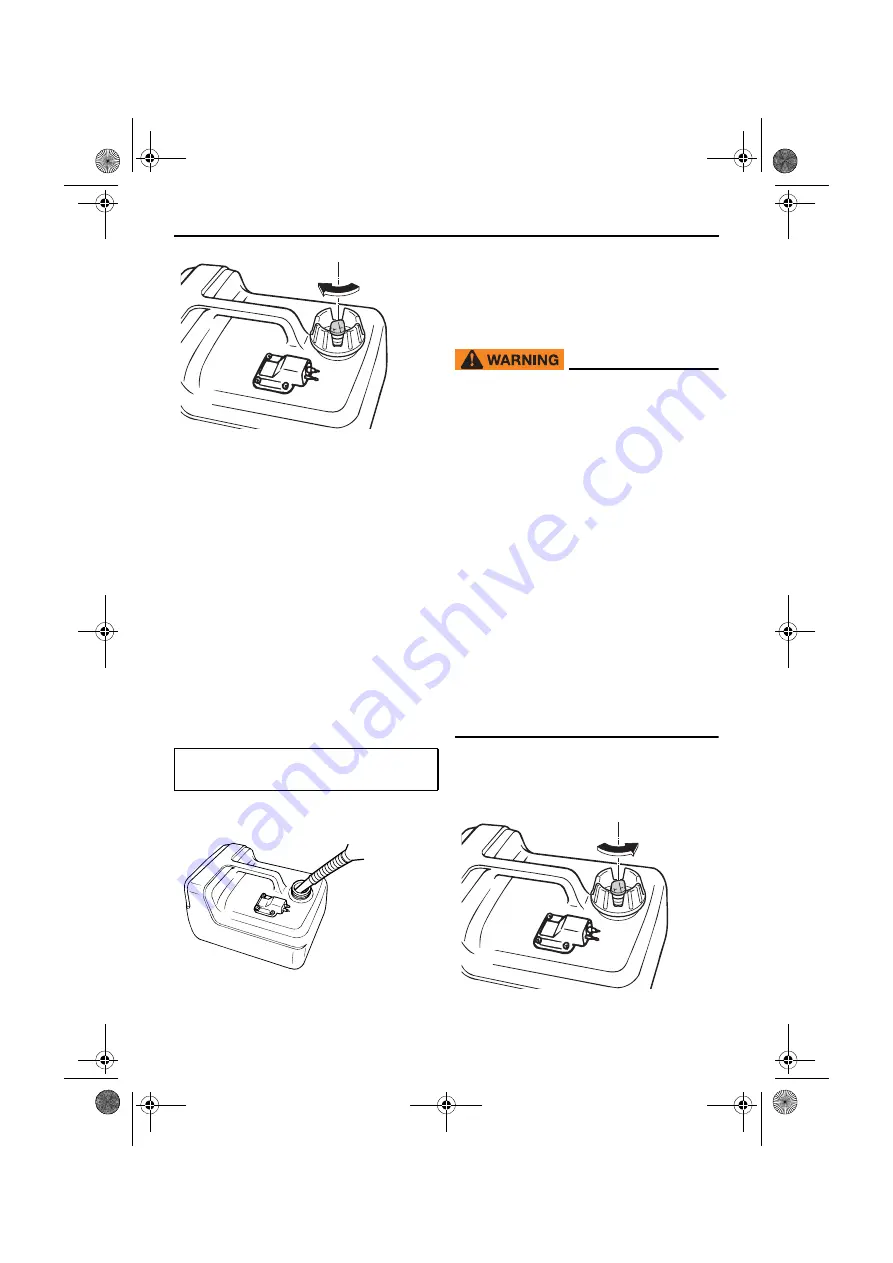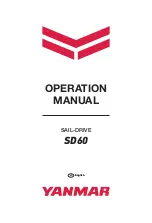
Operation
38
(3) Remove the portable tank from the boat.
(4) Be sure you are in a well-ventilated out-
door area, either securely moored or
trailered.
(5) Do not smoke and keep away from
sparks, flames, static electric discharge,
or other sources of ignition.
(6) If you use a portable container to store
and dispense fuel, use only an approved
GASOLINE container.
(7) Touch the fuel nozzle to the filler opening
or funnel to help prevent electrostatic
sparks.
(8) Fill the fuel tank, but do not overfill.
WARNING! Do not overfill. Otherwise
fuel can expand and overflow if the
temperature increases.
[EWM02611]
(9) Tighten the filler cap securely.
(10) Wipe up any spilled gasoline immediate-
ly with dry rags. Dispose rags properly
according to local laws or regulations.
EMU27453
Operating engine
EWM00421
Before starting the engine, make sure
that the boat is tightly moored and that
you can steer clear of any obstructions.
Be sure there are no swimmers in the
water near you.
When the air vent screw is loosened,
gasoline vapor will be released. Gaso-
line is highly flammable, and its vapors
are flammable and explosive. Refrain
from smoking, and keep away from
open flames and sparks while loosening
the air vent screw.
This product emits exhaust gases which
contain carbon monoxide, a colorless,
odorless gas which could cause brain
damage or death when inhaled. Symp-
toms include nausea, dizziness, and
drowsiness. Keep cockpit and cabin ar-
eas well ventilated. Avoid blocking ex-
haust outlets.
EMU2746B
Sending fuel (portable tank)
(1) If there is an air vent screw on the fuel
tank cap, loosen it 2 or 3 turns.
Fuel tank capacity:
12 L (3.17 US gal, 2.64 Imp.gal)
ZMU04484
U6FW76E0.book Page 38 Tuesday, November 23, 2021 7:37 AM















































